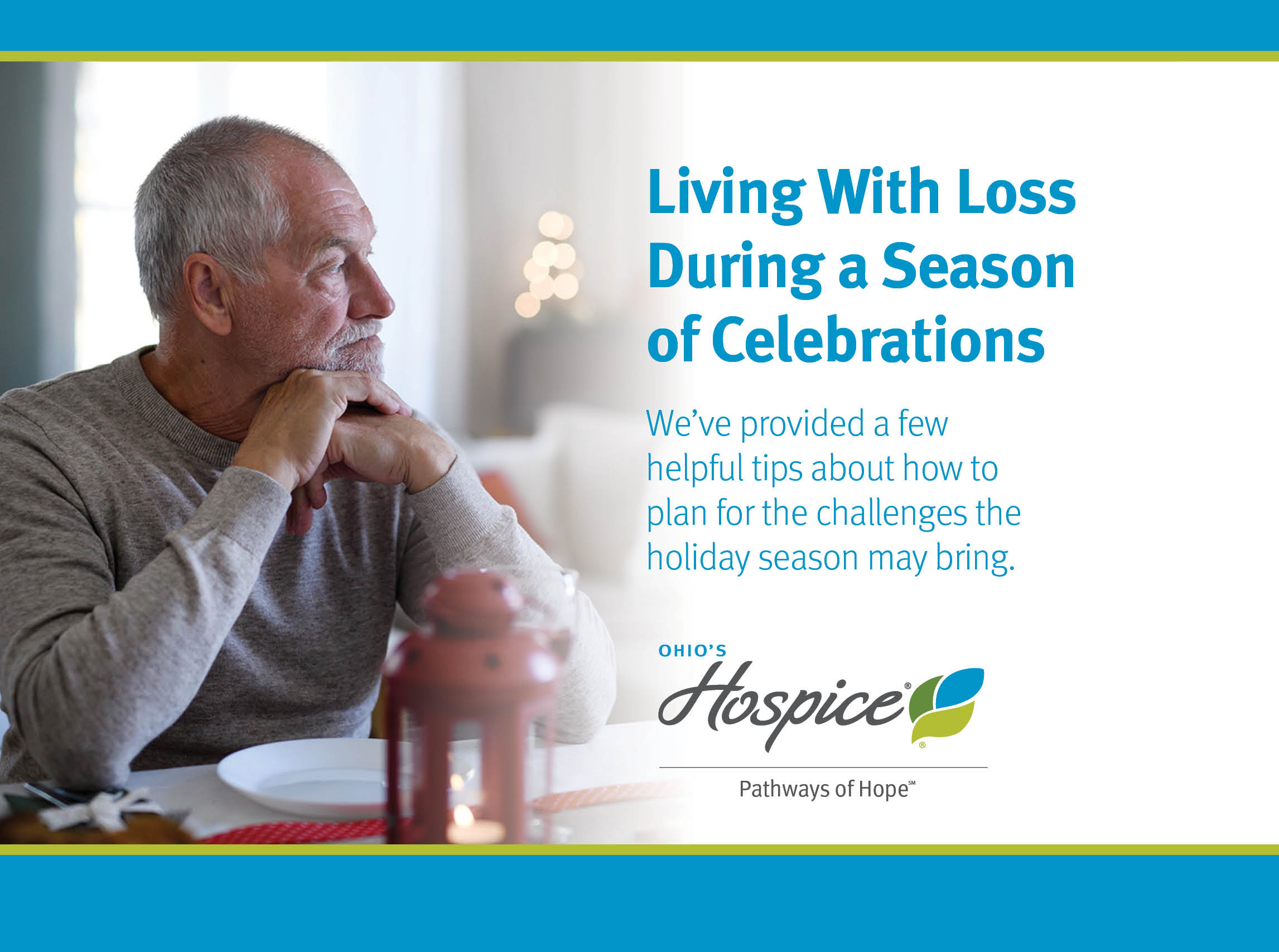
Living With Loss During a Season of Celebrations
Birthdays, anniversaries and holidays tend to be particularly challenging for those who are grieving because they can painfully trigger memories and longings for the past. For many, Halloween has replaced Thanksgiving as the kickoff to a marathon of holiday preparations and activities. Even in the best of times, the holiday season can be physically, emotionally and financially taxing.
It should come as no surprise when grieving people start to feel a sense of dread as they contemplate the first holidays after a loss. Since withdrawing into a cave and hibernating with the bears until spring comes is not a practical option, the best strategy is to prepare and plan for the challenges the holiday season may bring.
- Recognize your very human tendency to expect and predict the worst. In fact, most bereaved veterans of “first holidays” will tell you that although the holiday itself presented them with some painful memories, their anticipation was much worse than the experience.
- Seek out structured opportunities to acknowledge your loss and honor the memory of your loved one. Participation in remembrance events such as our Remembrance Walks and Hope for the Holidays programs, or one of the many advocacy group-sponsored events such as Walk for the Cure or Walk to Defeat ALS, can serve as meaningful opportunities for healing.
- Involve other family members in planning for the holidays. A family conference can be an effective forum that encourages the renegotiation of holiday plans and individual responsibilities based on input from everyone.
- Scale back or eliminate decorating, shopping, baking, cards, and social obligations.
Even in the best of years, we often find ourselves exhausted by trying to do it all. When grief is part of the mix, it becomes clear that doing it all is impossible.
- Consider altering, rather than discarding, important family traditions. While it might be too painful this year to gather around the dining room table for the traditional homecooked dinner, a buffet meal that everyone contributes to, or dinner out at a restaurant, may be preferable alternatives.
- Create new rituals that incorporate your loved one’s memory into the holiday. Flameless candles that are lit throughout the season, lighting a memorial candle at mealtime, decorating the gravesite with seasonal flowers or other items are all examples of small but meaningful rituals that acknowledge our continuing bonds.
- The custom of holiday gift giving is often a painful reminder of the gifts and people we are no longer shopping for. Many find that intentional gifts to residents in nursing homes, or individuals/families with material needs can be a meaningful way of honoring deceased loved ones.
- Intentional random acts of kindness during the holiday season can be highly therapeutic. A larger than normal tip for your server, paying the bill for an unsuspecting diner, leaving change in a vending machine, leaving a book in a waiting room or bus station with a note to enjoy, sending an anonymous gift to someone you know, or offering a kind word to a frazzled parent are all ways to scatter kindness.
- Nurture yourself. Take a nap. Sleep in, soak in the tub, or get a massage.
- Ask yourself this question: “If I knew this holiday season were to be the last one that I would have with my remaining loved ones, how would I spend it?” Loss teaches us that the moments we are granted in life are incredibly fleeting and valuable.
- Seek out additional support. Attending a grief support group or talking to a grief counselor can be of immeasurable help in meeting the challenges of navigating the holiday season.
Pathways of HopeSM Grief Counseling Centers
Ohio’s Hospice offers grief and bereavement support through our Pathways of HopeSM Grief Counseling Centers, which provide a variety of services to the communities we serve. Support and education are provided by a team of counselors and social workers, all with significant experience and expertise in assisting grieving children, adolescents and adults.
For more information about Pathways of Hope, click here.

